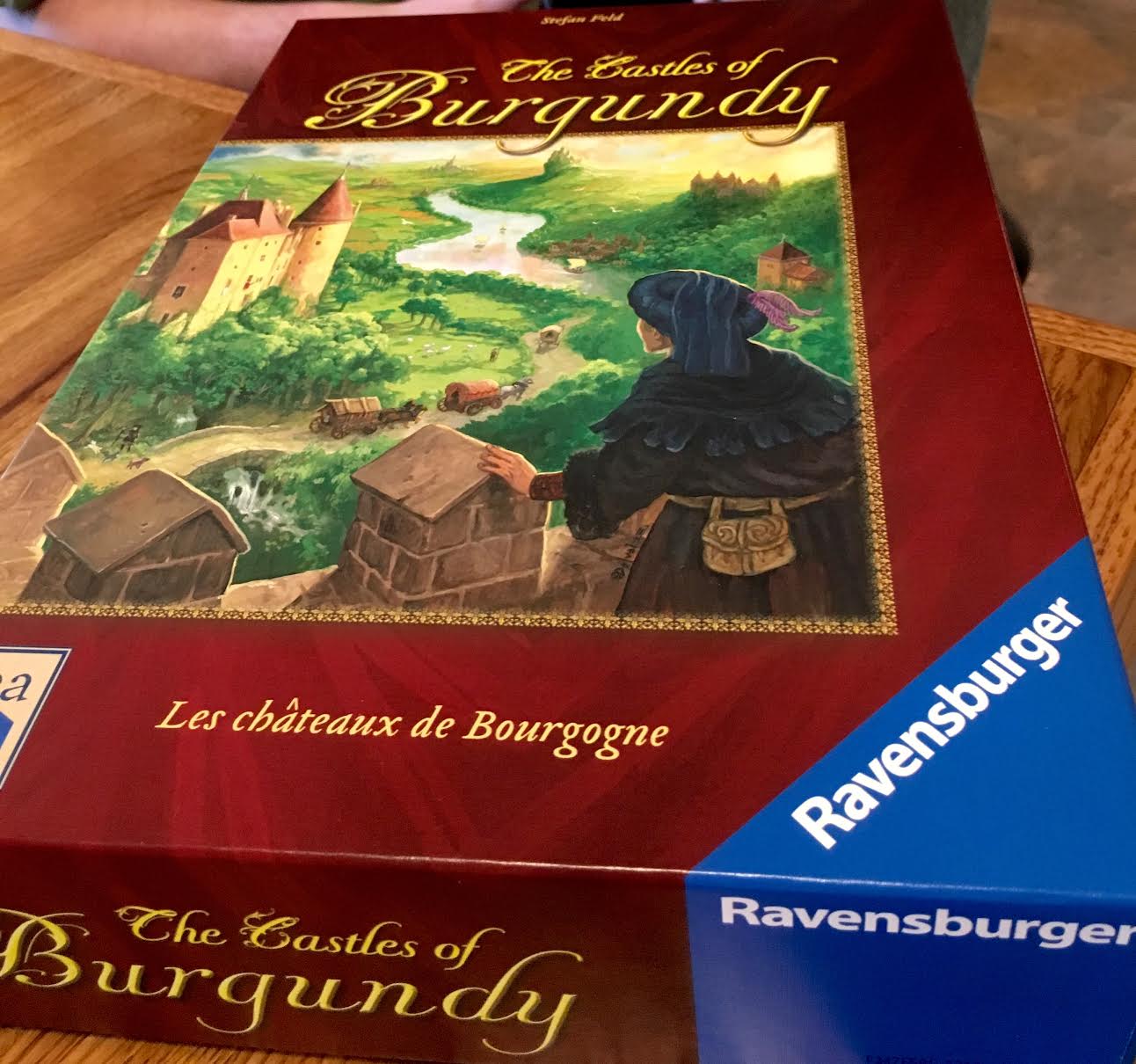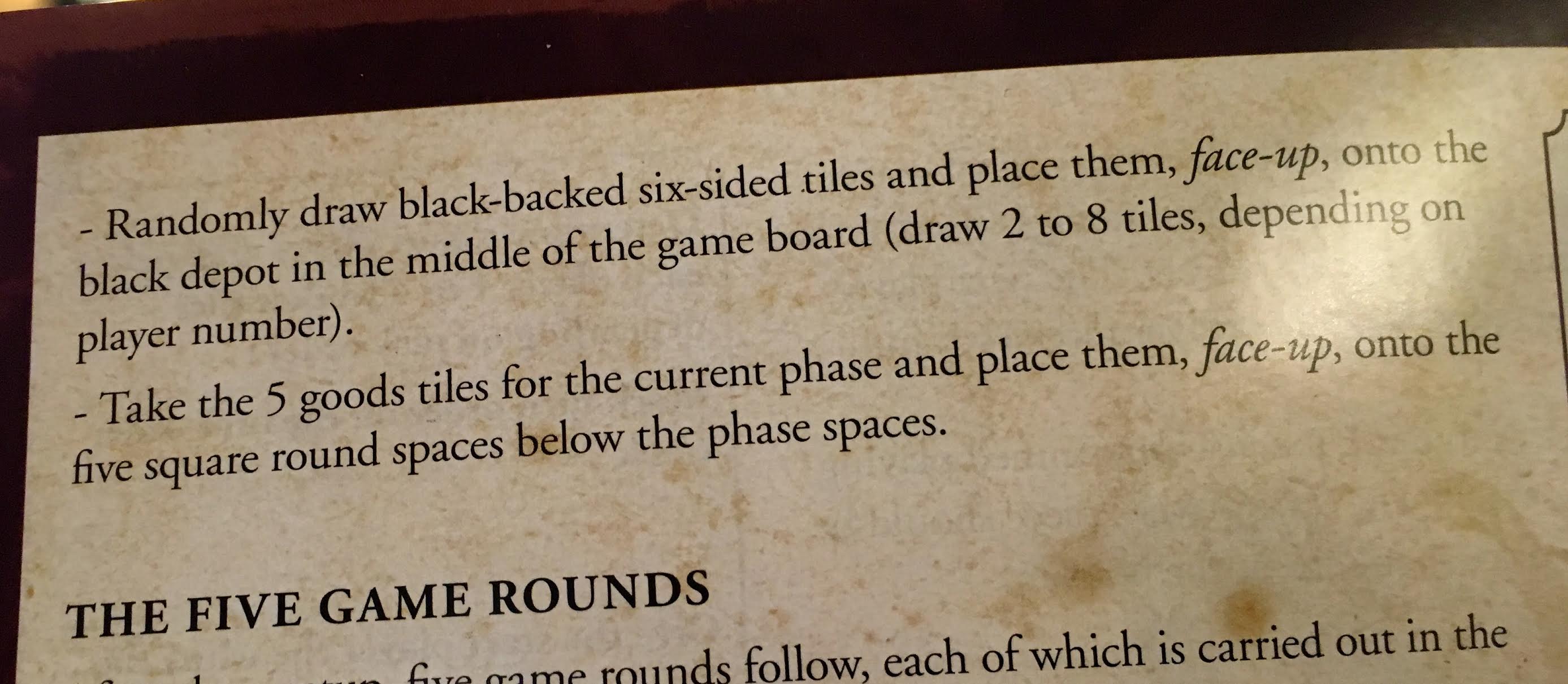This week’s Monday Night Gaming / MNG: The Castles of Burgundy
If you haven’t heard, there’s a horrific heat wave sitting on top of the Pacific Northwest. While my friends in the south may laugh at folks complaining about a high of 95, you have to remember three things:
a) That is not a normal temperature up here ever
b) No one has air conditioning
c) Our houses are built to keep in the heat. That means if it’s 95 outside, it’s over 100 inside.
 We won’t have screens for our windows until the end of the month, so we can’t even open our windows without the indoor-only cats getting out or leaping to their deaths from a 2nd story window. In order to escape the heat, we went to the nicely air-conditioned, local gaming hub: Zulu’s Board Game Cafe, where we played The Castles of Burgundy.
We won’t have screens for our windows until the end of the month, so we can’t even open our windows without the indoor-only cats getting out or leaping to their deaths from a 2nd story window. In order to escape the heat, we went to the nicely air-conditioned, local gaming hub: Zulu’s Board Game Cafe, where we played The Castles of Burgundy.
Publisher: Ravensburger
# of Players: 2-4 players
Best with: 2 Players
Playing Time: 30-90 minutes. Definitely 60-90 on first play.
General Mechanics: This game is a typical tile placement / strategy / dice rolling combination game. Once you get the hang of the mechanics, game play goes fairly quickly and the strategy part is just as important as the dice rolling. Every tile has a purpose that is set off upon placement of the tile in the player’s princedom. The player is an aristocrat who is tasked with controlling and expanding a small princedom, which is done through that tile placement. Players will also gain and use workers, mine for silver, lay water trade routes, and sell goods.
The game has a main board and player boards, which that are fairly confusing as they use the typical Euro-depictions that read as a mix between hieroglyphics and Greek. While most developers are smart enough to show images of the game pieces in their manuals, the game developers did not see fit to do so, leaving the players to wonder what they mean by tile descriptions that read like “…the five square round spaces.”
No really. Look.

The entire manual is riddled with mistakes, vagueness, and outright contradictions that make the player wonder if they even had an editor much less play-tested the damn thing.
If you can get past it, the game itself is quite fun. Players take settlement tiles from the main board game and place them in their princedom, which consists of multiple regions. Like most things in this game, those regions have color types, which dictate what tiles can go there. Placing the tiles isn’t simple as the player has to roll the correct numbers to not only take the tile but also place it.
The game has five phases and each phase has five rounds. The main board game restocks at the beginning of each phase, so by the fifth round, players may find slim pickings available on the main board. At the beginning of each round, all players roll their two dice. Whoever is first gets to roll a third, white die, which is used to determine where goods get placed on the main board. Turn order is maintained through each round unless a player takes a particular action that changes this.
During a player’s turn, the player can perform 2 actions from the following:
- Take a settlement tile from a numbered depot on the main board that matches the number on one of his dice. This gets placed in the staging area on their player board.
- Take a settlement tile from the staging area and place it in an area of their princedom whose number matches one of his dice. The tile must be placed adjacent to a previously placed tile.
- Deliver goods with a number matching one of his dice.
- Take worker tokens. These are handy because they allow the player to adjust the roll of their dice.
Players can also buy a settlement tile from the central depot on the main game board (which also goes into the staging area). Many of these actions can award victory points. Some are immediately recorded while others, are counted at the end of a phase or at the end of the game. Each settlement tile can also offer a boon by way of additional actions, money, goods tiles, and victory points. Some will let the player go first next round, while others will allow the player to adjust die rolls. (We had to use the manual pretty regularly the entire first game in order to read the paragraphs on what various placement tiles did.)
How to Win/Lose: At the end of five phases, the player with the most victory points wins.
What I Liked: Once we got the hang of the rounds vs. phases, and how the board resets, the game was pretty involved and required a fair amount of strategy. It was a lot of fun!
What I Didn’t Like: Whoever wrote and developed that game manual should be fired. STAT.
Overall Rating/Impression: I would give this a higher rating but with the manual being a big ball of fail, I give the game a 7/10.

